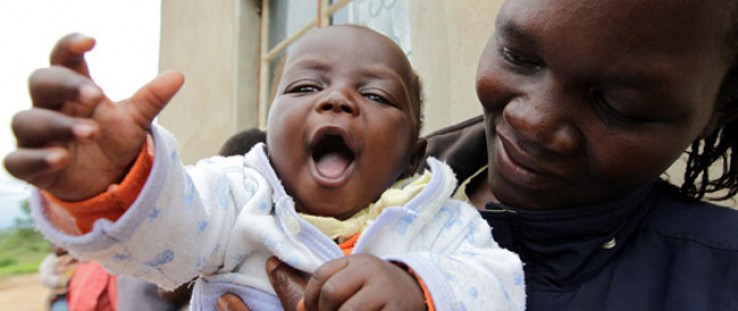 Zanele and her 2-month-old baby boy, Nkosingphile.
JON HRUSA, EPA
Zanele and her 2-month-old baby boy, Nkosingphile.
JON HRUSA, EPA
 Zanele and her 2-month-old baby boy, Nkosingphile.
JON HRUSA, EPA
Zanele and her 2-month-old baby boy, Nkosingphile.
JON HRUSA, EPA
Just one year ago, Zanele* was a young mother facing a precarious future in rural Swaziland.
She and her husband Mfanzile owned a tiny, one-room house at the top of a hill, in a small village about 50 kilometers east of the capital Mbabane. They lived there with their infant daughter, Phiwayinkhosi, whom they called Phiwa.
Life was hard—there was barely enough space for the three of them, and they earned very little money. Sometimes there was not enough food. And there was one more challenge for this young, struggling family—both Zanele and Mfanzile were HIV-positive.
Their home, Swaziland, is an independent kingdom within the borders of South Africa. Although its population numbers just over a million people, it has the highest HIV rate in the world. More than a quarter of adult Swazis—one in four people ages 15-49—is infected.
And although all parts of society are affected by this disease, couples like Zanele and Mfanzile often face high levels of stigma and discrimination.
“Despite all of these difficulties, we were happy,” said Zanele. “Mfanzile and I lived for Phiwa.”
Phiwa was born in 2008, HIV-negative, thanks to the health services that she and Zanele received at the nearby Mkhulamini Clinic.
Health providers at the clinic receive training to prevent mother-to-child transmission (PMTCT) of HIV through the USAID-funded Call to Action project, implemented by the Elizabeth Glaser Pediatric AIDS Foundation. Today, mother-to-child prevention services, including family-planning support for mothers, antiretroviral prophylaxis, infant nutrition support, and careful follow-up of exposed infants, have become increasingly available in health facilities and communities throughout the country.
Today, due, in part, to the U.S. Government’s comprehensive strategy to make antiretroviral drugs (ARVs) widely available in Swaziland, coupled with an aggressive six-year crusade to reduce maternal-to-child transmission and improve HIV-free survival, UNAIDS (the Joint United Nations Program on HIV/AIDS) estimates that 67 percent of HIV-positive, pregnant women in Swaziland are receiving the drugs and services needed to prevent transmission to their children. As a result of these efforts, nearly 60 percent of all potential infant infections are being averted in the country.
In a country where, according to the CIA, the HIV/AIDS epidemic has been so severe that life expectancy is just 49 years, the impact of this campaign will be felt for generations.
Unfortunately, some women and their children still slip through the cracks. Before Phiwa was born, Zanele’s baby, Tema, was one of those cases.
Love, Heartbreak and Denial
Zanele started dating Mfanzile in high school. She attended school sporadically because her family had little money and her father was often ill. To make matters worse, her classmates often teased her because she had no shoes.
She ignored Mfanzile’s advances at first, but his persistence won her over. The change came one day when he presented her with a special gift—a pair of shoes and money for a new school shirt.
Zanele’s father died that year, but she was able to continue her studies with Mfanzile’s support. They began seeing each other, and things were going well until 2005, when 20-year-old Zanele became dizzy during school exams and was taken to the hospital. She soon discovered she was pregnant.
But that trip to the clinic also produced another life-altering discovery: She was HIV-positive.
She told Mfanzile about her HIV status, but he refused to get tested. Zanele dropped out of school and gave birth to a baby girl, Tema.
Unfortunately, Zanele wasn’t offered PMTCT services, and didn’t receive the drugs needed to prevent passing on the virus to her daughter. Her infant daughter was never tested.
When she was just 1 year old, Tema suddenly became sick and died. Without immediate treatment, fewer than half of HIV-positive infants survive to see their second birthdays.
Zanele and Mfanzile continued to see each other after Tema’s death. HIV finally caught up with Mfanzile when he became ill in 2007. Zanele took him to the Mkhulamini Clinic, where he finally agreed to an HIV test. He, too, tested positive.
Both started receiving antiretroviral treatment (ART) to control their HIV infections, and Mfanzile’s health improved. After receiving PMTCT services at Mkhulamini, Zanele gave birth to Phiwa in 2008, and the couple married in 2009.
This should have been a happy ending for this young family, but things soon took a turn for the worse.
Stigma Thicker than Blood
Perhaps because he began treatment so late, Mfanzile’s ARV regimen began to fail. He became so sick that he was unable to work, and he lost his job as a night watchman.
The couple farmed crops on their small plot of land, but they made barely enough money to pay for food and the monthly trip to the hospital to collect the government-supplied, PEPFAR-subsidized ARVs that kept them both alive.
Mfanzile’s family, who owned the land that the couple lived on, harassed them constantly about their HIV status.
“They would say horrible things to him,” said Zanele. “I kept telling him, 'Don’t worry about it. Don’t go to them.’ But then they came to our house and continued with the verbal abuse.”
In June 2010, Mfanzile died from AIDS-related complications.
“It was clear that Phiwa and I were no longer welcome in our own home,” said Zanele. “On the day of my husband’s funeral, I packed the possessions I had, took my daughter, and left.”
At the time, Zanele was six months pregnant.
Community Education Brings Hope
The day Zanele left her home with her daughter on her back, the situation looked particularly bleak. But today she and her family have that rare chance at a new beginning.
She is now living with her mother, Alice, in the Lubombo region of Swaziland, about 60 kilometers from her husband’s village.
Alice has something in common with her daughter—she, too, is living with HIV.
According to national statistics, pregnant women bear the brunt of the HIV burden in Swaziland. At 42 percent, the infection rate among pregnant women is also the highest rate in the world, peaking at as much as 50 percent among 25- to 34-year-olds. For every two HIV-positive adult men, there are three HIV-positive adult women, according to the 2007 Swaziland Demographic and Health Survey. The majority of new infections, more than 60 percent, also occur in females.
In this rural part of Swaziland, Zanele’s mother serves as a role model. She makes no secret of the fact that she is HIV-positive, and actively works to defeat the stigma surrounding the disease.
“It’s very important for everybody to know that if you have HIV, you are still a human being,” she said.
Several of her neighbors have also disclosed their status. Education efforts by the health ministry and USAID and its partners—brave people like Alice—are changing the way people think of HIV and AIDS in Swaziland.
“She has taught me that being HIV-positive is nothing to be ashamed of,” said Zanele.
Despite all the hardships and displacement that she experienced during this latest pregnancy, Zanele continued to take her ARVs and go to the clinic for PMTCT services.
“Thanks to the HIV counseling and education that I’ve had, I knew what I had to do to protect the life of my baby,” she explained.
On September 23, 2010—three months after Mfanzile’s death—Zanele gave birth to a baby boy, Nkosingphile.
His name means “gift from God.” So far, he has tested HIV-negative.
Zanele’s daughter Phiwa is now a healthy 2-year-old, and loves to dance and play with her cousins, who also live with Alice. Sometimes Zanele has trouble believing that both of her children have been protected from the virus devastating her country.
“I’ve had Phiwa tested many times—so many that the clinic refuses to test her again,” said Zanele. “The nurses say she is HIV-negative, and I don’t need to have her tested anymore.”
A Six-Year Miracle
Between 2004 and 2010, the USAID-supported Call to Action Project made dramatic progress in preventing new HIV infections in children in Swaziland.
In the area of mother-to-child transmission, USAID worked with the health ministry and other key partners to develop a countrywide program. Before it started, there were virtually no PMTCT services available in Swaziland. Six years later, approximately 85 percent of pregnant women delivering in facilities have access to ARVs, drastically reducing the risk of passing HIV on to their children.
Zanele was one of these women.
Her future now looks brighter, and her children are living proof of the potential to eliminate pediatric AIDS, even in a high-prevalence country like Swaziland.
“I see a long life ahead for myself and my children,” she said. “I believe that Mfanzile is looking down on us from somewhere, and he is smiling.”
Heather Mason and Robert Yule are with the Elizabeth Glaser Pediatric AIDS Foundation.
* Last names have been withheld to protect privacy.







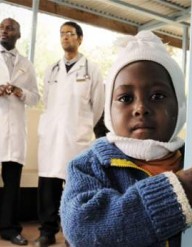

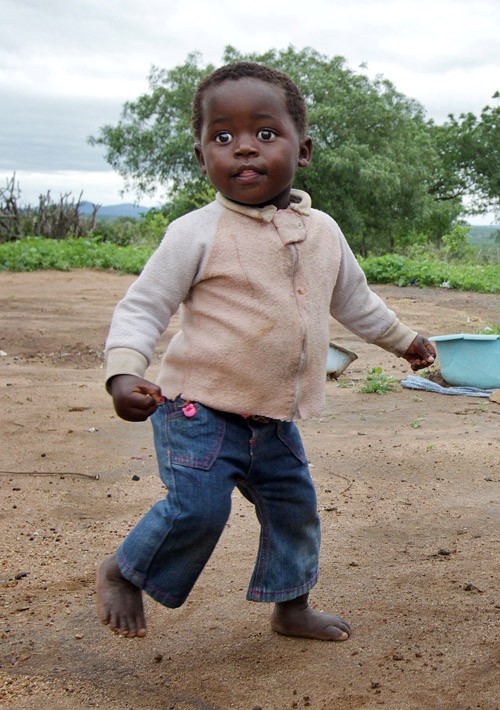

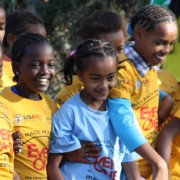
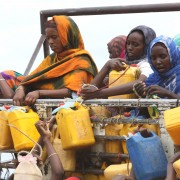
Comment
Make a general inquiry or suggest an improvement.